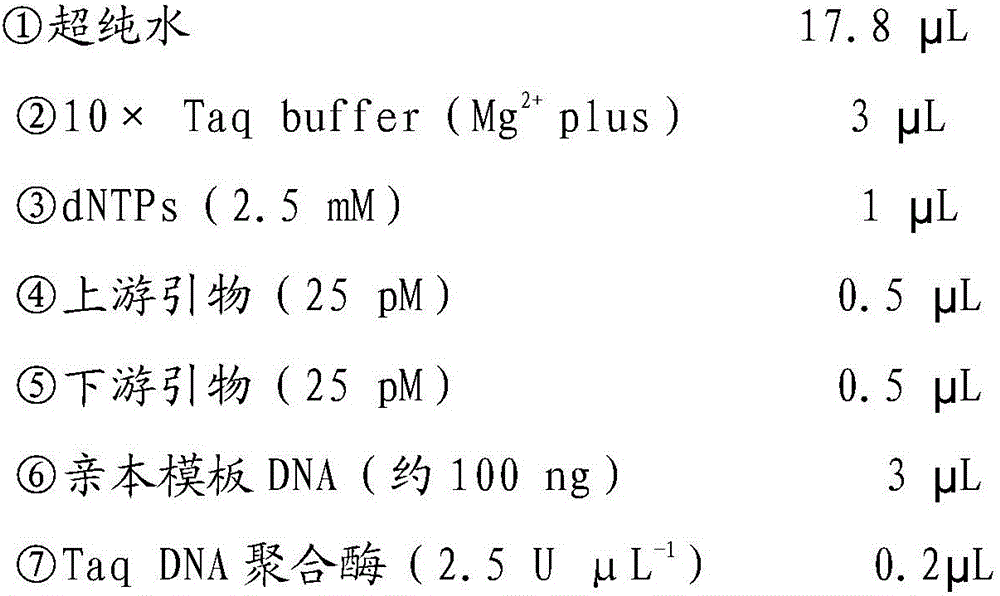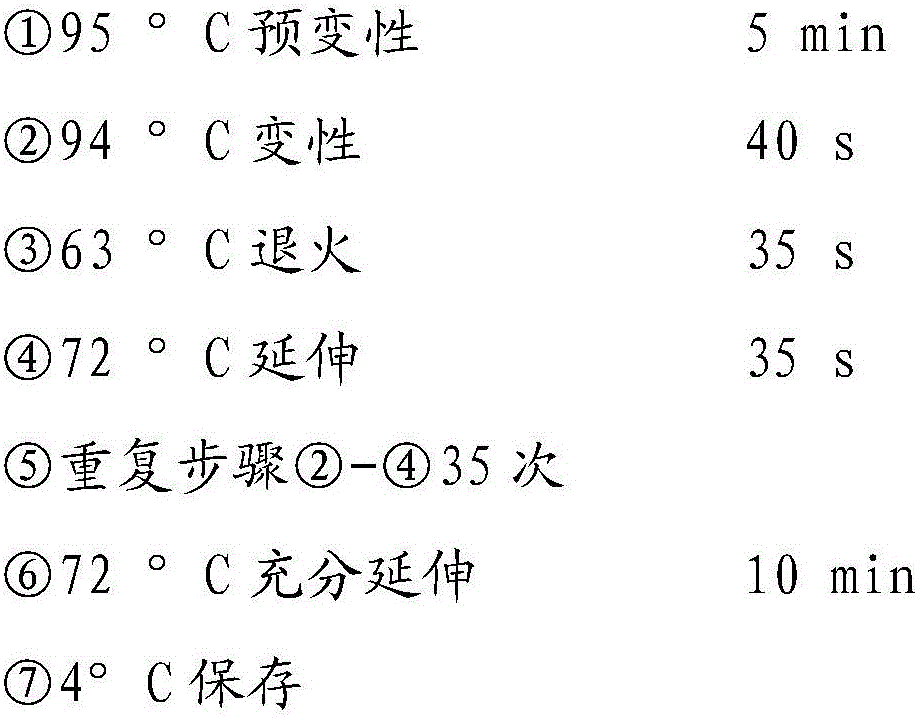CH4 enzyme digestion identifying method of hybrid yellow catfish
An enzyme digestion identification and yellow catfish technology, which is applied to the determination/inspection of microorganisms, biochemical equipment and methods, etc., can solve the problems of low detection efficiency, low repeatability, and influence on popularization and use, and achieves simple operation, experimental Fast, intuitive identification of results
- Summary
- Abstract
- Description
- Claims
- Application Information
AI Technical Summary
Problems solved by technology
Method used
Image
Examples
Embodiment 1
[0028] CH 4 Enzyme digestion identification method, using CH after PCR amplification 4 There are interspecies sequence differences between the gene fragments of Pedelvis catfish and P. Pelvic catfish and its hybrid offspring.
Embodiment 2
[0030] CH 4 Enzyme digestion identification method specifically comprises the following steps:
[0031] A, take the tissue sample of the fish to be tested, and extract the genomic DNA;
[0032] B. Using the extracted genomic DNA as a template, carry out PCR amplification under the guidance of special primers;
[0033] C. Digest the amplified target gene fragment with restriction endonuclease HindⅢ, and the restriction site is A↓AGCTT;
[0034] D. PCR-RFLP product was detected by agarose gel electrophoresis. After electrophoresis detection, there was only one band on the same swimming lane, which was Peeled catfish; there were two bands on the same swimming lane, which was Peeled catfish; in the same swimming lane There are three bands on it, which is a hybrid.
Embodiment 3
[0036] CH 4 Enzyme digestion identification method specifically comprises the following steps:
[0037] A, take the tissue sample of the fish to be tested, and extract the genomic DNA;
[0038] B. Using the extracted genomic DNA as a template, carry out PCR amplification under the guidance of special primers;
[0039] C. Digest the amplified target gene fragment with restriction endonuclease HindⅢ, and the restriction site is A↓AGCTT;
[0040] D. The PCR-RFLP product was detected by agarose gel electrophoresis. After electrophoresis detection, there was only one band on the same swimming lane, which was peltatus varschii.
[0041] The special primer in the B step is CH 4 Specific primers for gene fragments, the primer pair is:
[0042] Forward primer 5'-TCCCCAAGGTTTACTTGCTCGCTCC-3';
[0043] Reverse primer 5'-CGATGGATCTGGATATGTGGCGCAC-3'.
PUM
 Login to View More
Login to View More Abstract
Description
Claims
Application Information
 Login to View More
Login to View More - R&D
- Intellectual Property
- Life Sciences
- Materials
- Tech Scout
- Unparalleled Data Quality
- Higher Quality Content
- 60% Fewer Hallucinations
Browse by: Latest US Patents, China's latest patents, Technical Efficacy Thesaurus, Application Domain, Technology Topic, Popular Technical Reports.
© 2025 PatSnap. All rights reserved.Legal|Privacy policy|Modern Slavery Act Transparency Statement|Sitemap|About US| Contact US: help@patsnap.com



